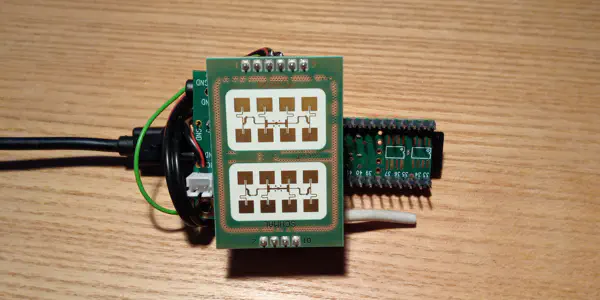The first prototype
The CitRad sensor had to be based on a radar sensor that was as inexpensive as possible but still reliable and easy to replicate. After a few tests, we chose the IPS-354 module from Innosent. We also needed a powerful microprocessor to process the signals from the sensor. Here we opted for the Teensy 4.0 in combination with the Teensy Audio Board, which is also available. The signal from the sensor can be processed with audio tools. The Audio System Design Tool and detailed Tutorials are available for this purpose. We were particularly interested in the fact that a spectral transformation (FFT) can be implemented. In contrast to other systems, the Teensy can continue to record data while it is doing the data processing so that we do not lose any data.

The very first hardware prototype
Photo: Nanu Frechen / CC-BY-CA
A low-noise amplifier?
Initially, we were still convinced that we needed an amplifier circuit to be able to use the signal from the sensor. We tested various amplifier boards and even designed a completely custom board. In the end, however, we realized that we wouldn’t need any amplification at all if we used the 32bit Audio Library, which uses the full bandwidth of the digital converter on the audio board.
First tests
With a few jumper cables and connectors, we were now ready to assemble the very first prototype. Since laptop operation was planned at the beginning anyway, all components were supplied with power via USB cable and at the same time a data connection was established so that the data could be viewed. The results looked very promising!

First recorded data. The speed curves of several cars are visible.
Screenshot: Nanu Frechen / CC-BY-CA